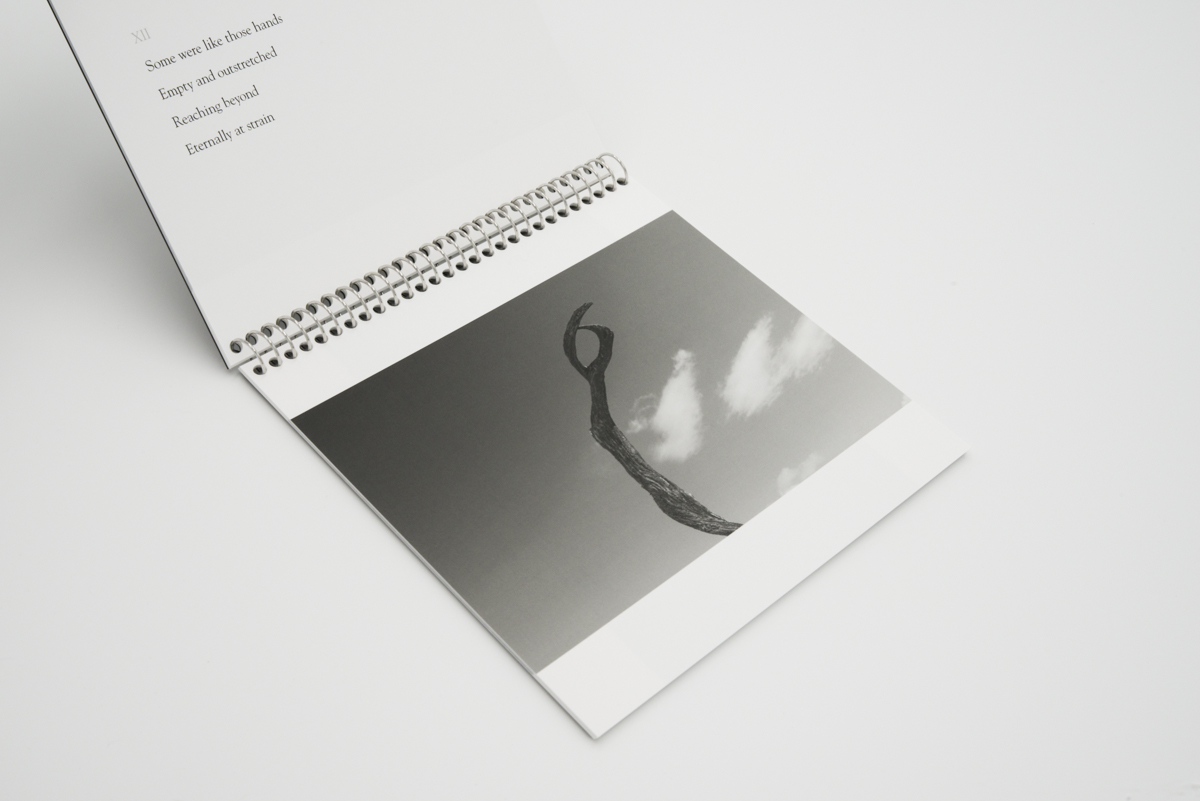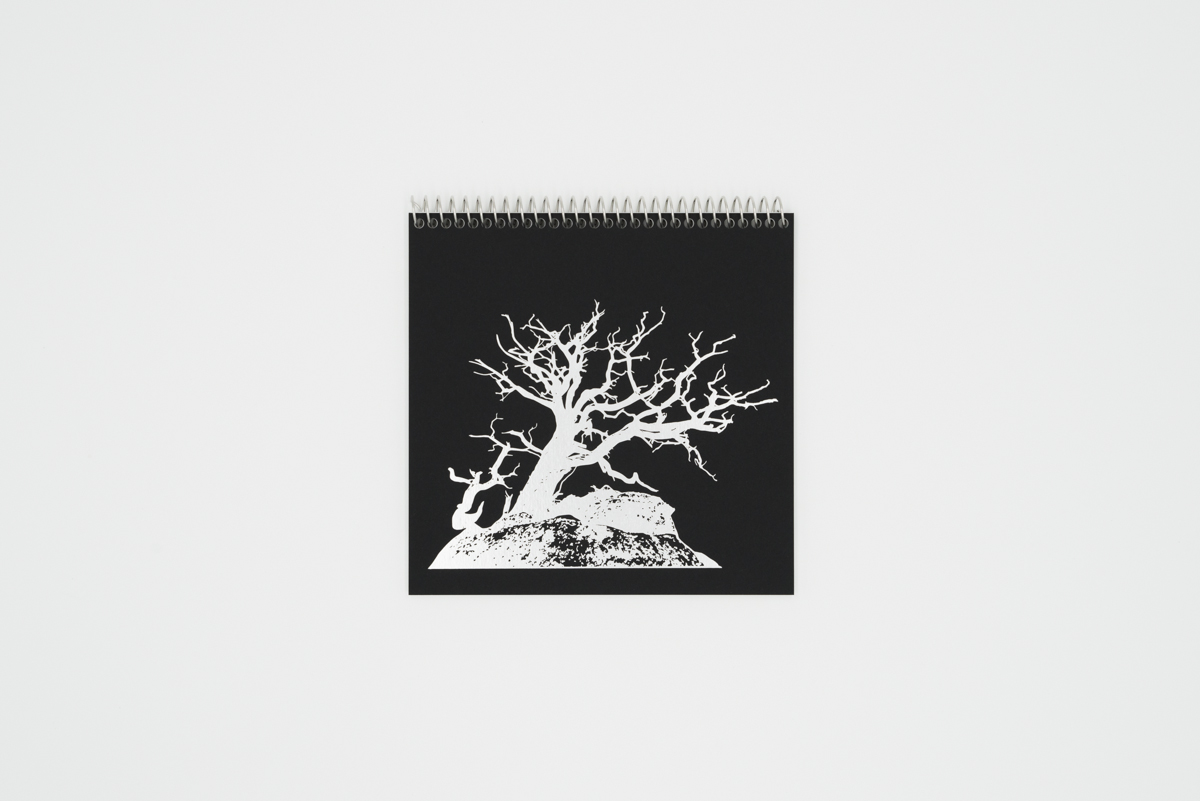
As a lad growing up in Aberdeen, the landscape was always a character in my story, a backdrop of grey granite that both cradled and challenged. The North Sea, relentless in its push and pull, and the wild, ancient cairns on the outskirts of the city were my first teachers in impermanence. I find myself returning to these thoughts often when I am out with my camera, trying to make sense of the world. It is a pursuit that is as much about understanding myself as it is about documenting the landscape around me. That is why John Sanderson’s The Grove, published by Zatara Press, appealed to me. It felt like a book that was not created but uncovered, an expedition rather than a photographic project.
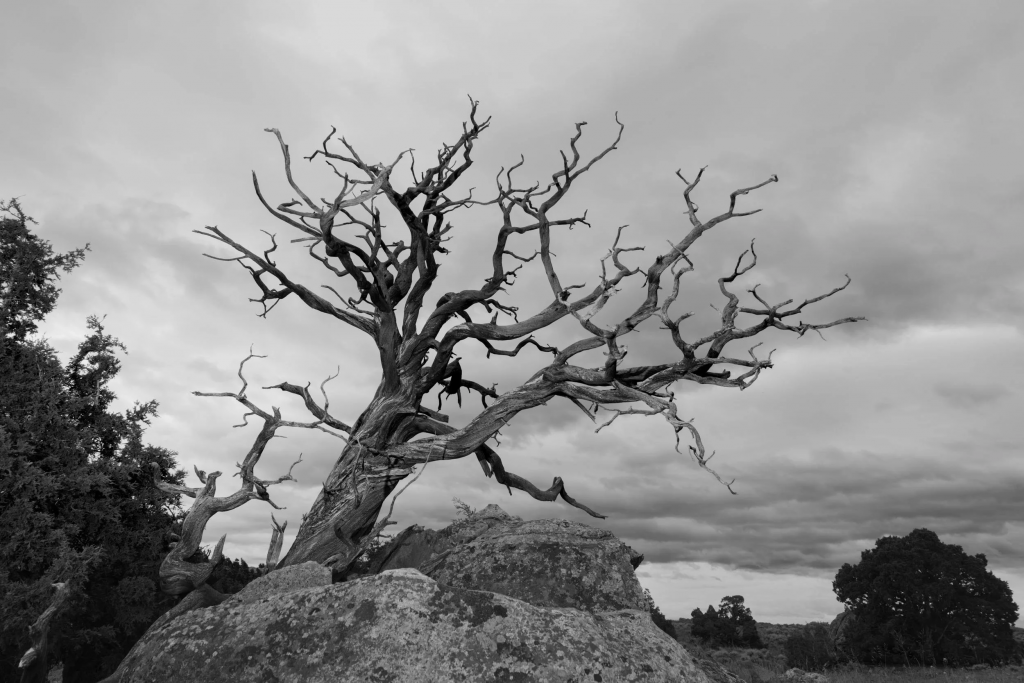
The physicality of the book is different to the normal books i have been reading. It is a small, unassuming volume, almost like a flipbook or a calendar, which you can get through in a single, focused sitting. That is not a criticism, it is part of the design. The size makes it feel intimate and personal, like a secret shared between the photographer and the reader. The stark black and white photography is a departure from Sanderson’s other work. It strips away the distractions of colour to reveal the very soul of the landscape, the texture of the rocks, the twisting forms of the trees, the subtle gradients of the sky. Paired with a companion poem written by Sanderson, the book becomes a multisensory experience, a bridge between two mediums. Having grown up with poetry as a constant in my life, I felt a deep connection to this blend of visual and written language. It’s a powerful acknowledgment that sometimes, a photograph alone cannot contain the breadth of a feeling.
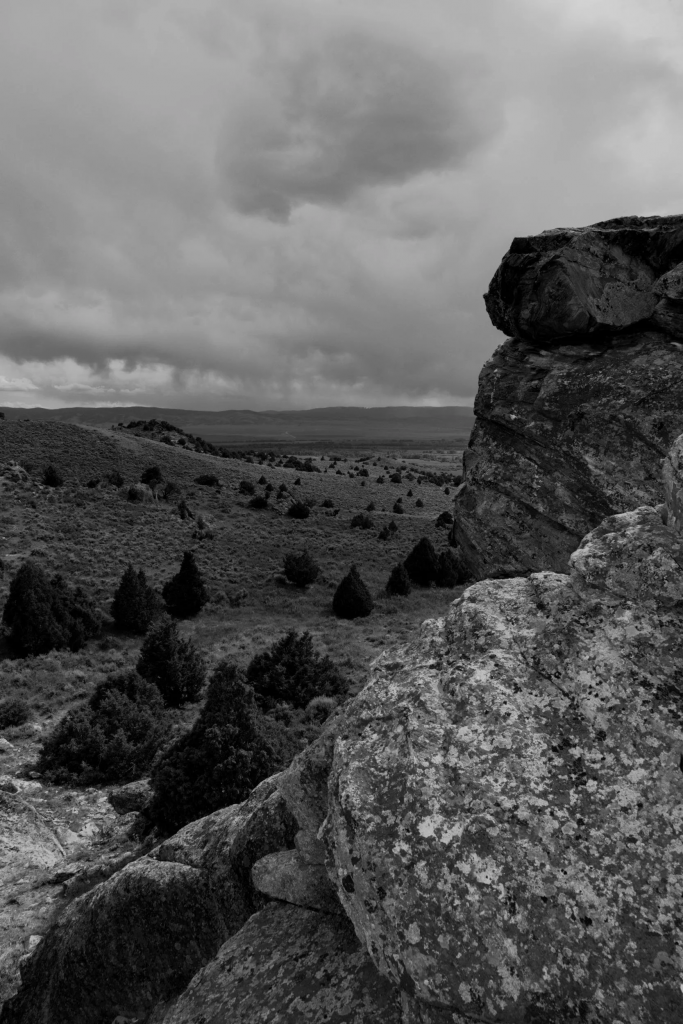
One of the images is a portrait oriented shot of a high vantage point. In the lower foreground, large, textured rocks covered in lichen slope upwards to a perfectly balanced boulder at the top. Beyond it, a vast plain stretches out, with small, conical bushes dotting the landscape under a uniformly grey, cloudy sky. There is a profound sense of geological time here, of things tempered into repose by the diligence of ages. It is an image that buries pale comparisons and makes gentle this little world. It is not just a picture of a landscape, it is a meditation on resilience, on how ancient and living things can coexist on the haggard heights, fortified by the silence and the wind.
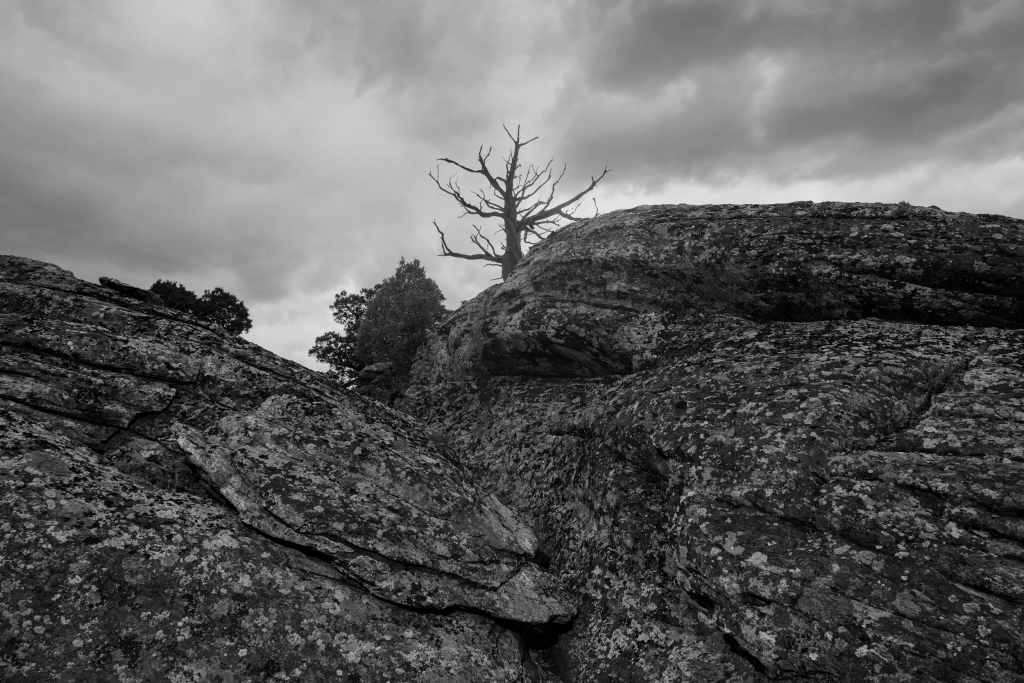
Another photograph captures a dead tree with intricate, twisting branches, standing alone in the centre of the frame. The tree looks like a gothic tracery against a dynamic sky filled with scattered clouds. This image perfectly encapsulates the philosophical questions at the heart of the project, what does this place mean in the context of one’s own being? The tree, with its outstretched, bone dry limbs, feels like a silent sentinel, a ghostly phantom of the mind, reaching beyond its own end to find a new kind of existence. It’s a reminder of how our own bodies are writ with histories and other tales, the progeny of an ancient race.
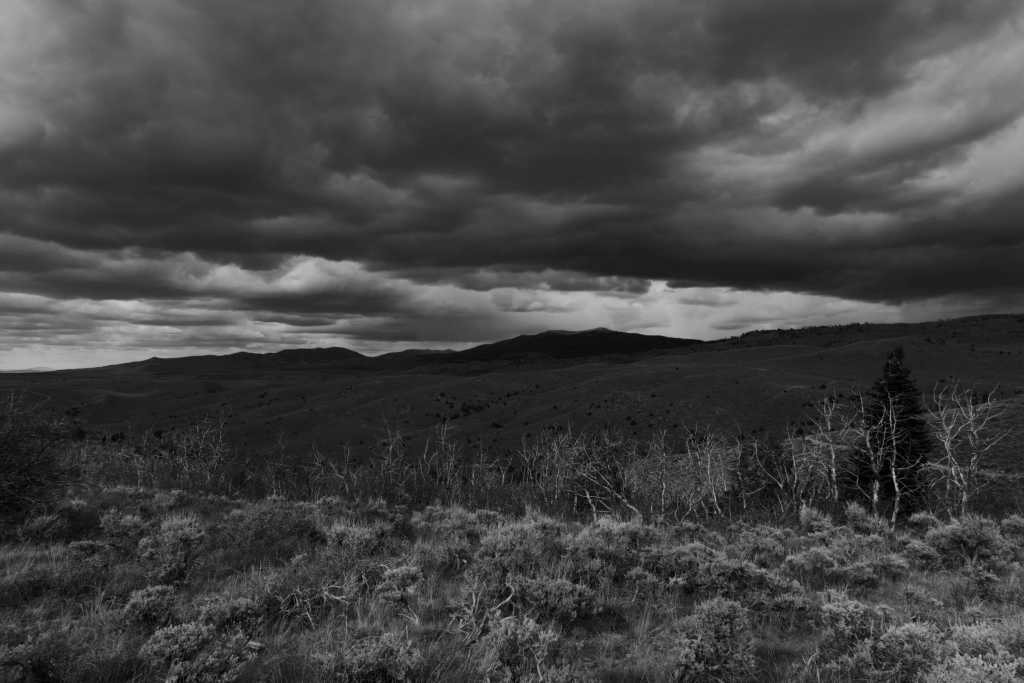
Another image is a wide horizontal view of a desolate plain under ominously dark, rolling storm clouds. The sky dominates the upper half of the frame, capturing a sombre, expansive wilderness feel. The low bushes and scattered dead trees in the foreground lead your eye to the undulating hills and the faint mountains in the distance. The sense of an approaching storm feels both like a physical threat and a spiritual reckoning, a broadside of most quelling fury. It is a moment of transitional beauty, a reminder that one must not sit or dwell too long or rest until the light has waned. Sanderson’s work is a masterclass in using the elements of nature to explore the deeper, more melancholic themes of impermanence and the search for belonging. The Grove is a book that whispers something essential, an unflinching look into a quiet space where the past and the present, the self and the natural world, are inextricably linked. It is a powerful volume that I will be returning to again and again.
Regards
Alex

